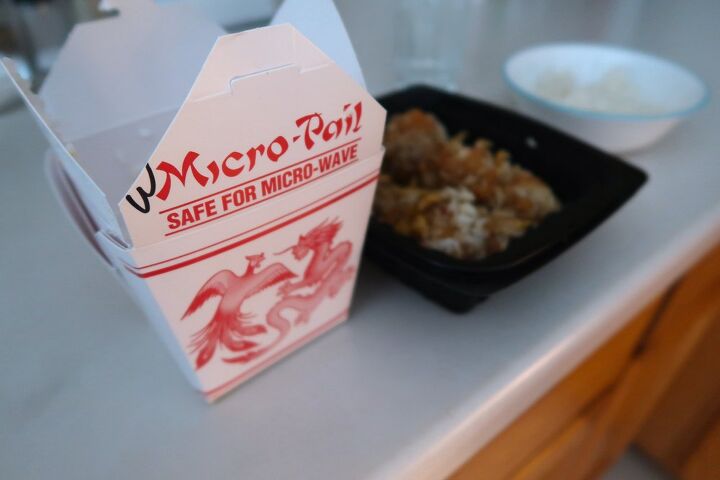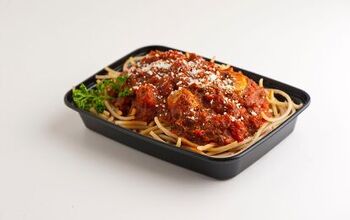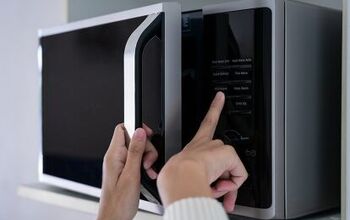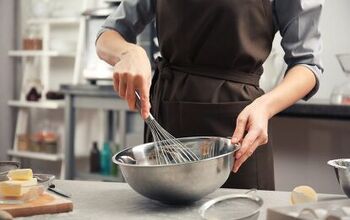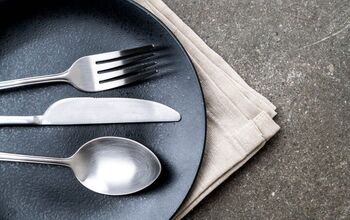Can You Put Chinese Food Containers In The Microwave?

Chinese takeout can be the perfect solution for a Friday night meal when you don’t feel like cooking. This tasty meal arrives at your door in a cute little paper pail with a handle. You eat what you can and then save the rest for later. But, when it comes to reheating, can you put this Chinese food container in the microwave, or do you need to dirty a plate for that?
Most Chinese food comes in a cheerful paper pail, also known as an oyster pail. It is possible to reheat your Chinese takeaway in most of these containers. However, if the takeaway box comes with a metal handle, you will need to remove it before you can safely nuke your food.
We’ll let you in on the secrets of the Chinese to-go box and whether or not other takeout dishes can go in the microwave. We also have a few tips for the best ways to reheat your Chinese food.
How are Chinese Takeout Containers Made?
The to-go box you get when your order from a Chinese restaurant makes you want to take an Instagram photo to preserve its cuteness. If you can manage the chopsticks, you are sure to get the likes! While we associate this oyster pail with the Chinese food we love, you may be surprised to find out that this uniquely shaped to-go box is an American invention. Originally these nifty boxes were made to hold oysters, which is why they are sometimes called oyster pails.
The origami-style box is made out of one piece of material that is folded into a box. This means no leaky corners! The inside has a waxy coating that keeps your paper box from deteriorating when you put food inside it. Unlike to-go coffee cups, these paper boxes can be reheated.
Many Chinese to-go boxes also come with a metal handle. Before you microwave your dish, you will want to remove this handle. When your food is hot, you can eat it straight out of the box. Or, you can unfold the box to become a plate. Neat, right?
Can Plastic or Styrofoam Chinese Takeout Boxes Go in the Microwave?
While oyster pails have become the classic delivery packaging for Chinese food across the nation, it is not the only packaging. Some Chinese restaurants may deliver your steamed white rice in Styrofoam or plastic containers.
Styrofoam Containers
If your Chinese food comes in Styrofoam, you will want to transfer it to a glass, ceramic, or plastic dish that is microwave-safe. Styrofoam can melt in the microwave, which will ruin your food, make a mess, and could possibly be a fire hazard. Even if the Styrofoam remains stable in the microwave, it can leach harmful toxins into your food.
Plastic To-Go Boxes
While many reusable plastic containers such as Tupperware are microwave safe, single-use plastic dishes may not be microwaveable. Some restaurants such as Olive Garden, use high-quality plastic to-go boxes which can be microwaved. However, the majority of single-use plastic to-go containers cannot go in the microwave. Check the bottom of your plastic container to see if it has a “microwave-safe” or a “microwave-safe reheat only” label. A small symbol with wavy lines, or a #5 on the container may also indicate that your to-go box is safe to reheat.
Best Ways to Heat Chinese Food
Now that we’ve looked at which containers are microwave friendly, what is the best way to reheat your rice? Is the microwave the best option, or will a stovetop or oven give you a better result?
Microwave
The microwave is probably the quickest reheating method. It can do a great job of keeping moisture in your food, as well. If your food has become dry in the refrigerator, you can add a douse of water over your food or place a damp paper towel over the top of your dish. While the microwave can reheat your rice and vegetables like a pro, any foods that were crispy, such as wontons, spring rolls, or breaded chicken, can become soggy when microwaved. Check your food in 1-minute increments to make sure you don’t overheat your food.
Stovetop
To reheat your Chinese food on the stove, you can use a skillet for rice dishes or a pot for soups. This can be the best method for keeping an eye on your food so it doesn’t burn. You may also notice that reheating your food on the stove does a good job of its texture. Add a bit of oil to the pan so your food doesn’t stick.
Oven
If you are reheating your food in the oven, you will want to use an oven-safe container. Covering your food with a lid or foil will help keep the moisture inside. You will want to set it on a rack that is close to the heat source. After your oven has preheated, it may take up to 10 minutes to reheat your meal. Check your food at 2-4 minutes to see if it is warm enough.
Food Safety Tip: Whichever method you choose to reheat your Chinese food, you will want your food to reach safe temperatures so you don’t run the risk of foodborne illnesses. According to the FDA, leftovers should reach a temperature of 165 degrees Fahrenheit in order to be considered safe.
Related Questions
What types of containers are microwave-safe?
Heatproof glass, paper plates, parchment paper, paper towels, as well as many reusable plastic containers, are generally microwave safe.
What does microwave-safe reheat only mean?
Some containers say “microwave-safe reheat only” instead of “microwave-safe.” This reheat-only type of container allows you to reheat food in the container, but you won’t be able to cook food in the dish. You will need to use lower microwave temperatures, as well. If your microwave has a reheat setting, you can use that. If not, choose a 50% power level or less.
Are takeout containers oven-safe?
Usually, no, a takeout container will not be microwave-safe. If a disposable container is safe to use in the oven, it will usually have the label “oven-ready” somewhere on the dish. Unless it has this label, do not put disposable dishes in the oven as this could cause a fire and/or injury.

Alex Praytor is a native Texan who got her degree in English Literature and decided to travel the globe. She finds the architecture and design of homes across cultures fascinating. In her spare time, she visits coffee shops with her family and creates projects for their own home. Alex enjoys sharing tips on how to keep repairs up to date while turning a house into a home.
More by Alex Praytor



